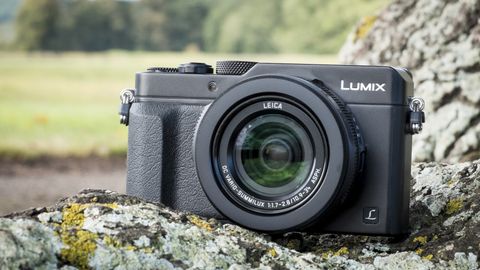Why you can trust TechRadar
The LX100 is aimed at experienced photographers who want a high quality compact camera that affords plenty of control. These users are also likely to want a camera that feels good in the hand and the LX100 fits the bill nicely. It has a solid build and a comfortable, curved grip on the front, along with a small but effective thumbpad on the back.
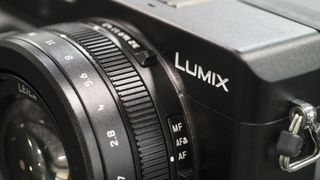
Instead of the usual mode dial, Panasonic has opted for traditional controls, and in addition to the shutter speed dial there's an aperture ring marked in whole stops (but 1/3 stop settings are possible) around the lens. This and the large sensor size may make the LX100 attractive to those disappointed that the Fuji X30 has a small sensor.
When the aperture ring and shutter speed dial are set to 'A' the camera is in program mode and will select the settings automatically. If either is set to 'A' while the other to a specific value, the camera is in aperture or shutter priority mode. Alternatively, users can set both shutter speed and aperture manually.
This is a traditional approach that has gained new fans with the arrival of cameras such as the Fuji X-Pro1, Fuji X-E2, Fuji X-T1 and Nikon Df.
Helpfully, the aperture ring clicks from one setting to another so you always know when an adjustment has been made. Although the resistance of the ring isn't especially high, I didn't find it clicked out of position very often. The shutter speed dial takes a little more effort to adjust than the aperture ring and although it doesn't have a lock, it stayed in place while I was using the camera.
Exposure compensation can also be set to +/-3EV via a traditional control, as there's a dedicated dial on the top-plate within easy reach of the right thumb and index finger. This moves more easily than the shutter speed dial and can be knocked off the selected setting relatively easily when pulling the camera out of a bag.
Asliding switch on the lens barrel enables image aspect ratio to be switched between 4:3, 1:1, 16:9, 3:2 and just in front is the manual focusing/zoom ring. This ring moves smoothly and easily, but because it's electronic rather than mechanical it has no fixed end point and it won't adjust when the camera is turned off. If 'Zoom Resume' is selected via the Custom menu, the camera will automatically zoom the lens the focal length it was at when it was turned off.
In manual focus mode, a half turn of the ring is enough to take the lens through its entire focus range. As soon as the ring is moved a simple focus scale appears in the main screen or electronic viewfinder (EVF) and a magnified section appears to make is easier to see the target. The focus peaking display can be very effective and makes manual focusing easy in some situations, but it's no use in low contrast situations when you just have to rely on traditional means and judge if the subject looks sharp.
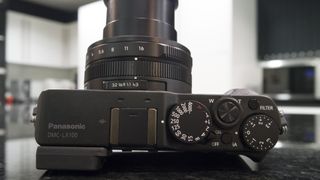
As with many compact cameras, there's also a sprung lever around the shutter release which can be used as the zoom control. This feels a little small and inconsequential under your index finger, but it responds well enough. It takes a little under three seconds (but more than 2.5 seconds) to zoom from one end of the lens to the other using this control.
Focus mode is set via a switch on the side of the lens barrel, which falls conveniently under my left thumb as I hold the camera. As the screen on the back of the LX100 isn't touch-sensitive the AF point must be set using buttons. The easiest way to do this is to assign the option to the Fn1 button on the back of the camera. Once this is done this button is pressed before the navigation keys are used to select the desired point.
It's possible to use the navigation keys to set the AF point directly, but this means sacrificing their shortcut functions.
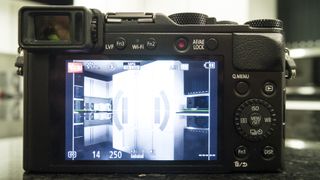
Not wishing to abandon inexperienced photographers who want a high quality camera (and experienced users who want an easy ride), there's an iA button on the top-plate to activate Panasonic's Intelligent Auto mode so exposure and white balance is handled by the camera. I found that I accidentally activated the iA button on a few occasions, so I set it to activate with a press and hold (instead of just a press) via the Custom menu.
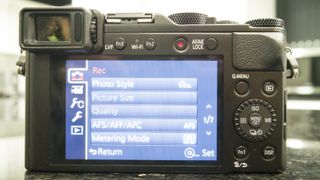
On the top of the camera there's a button marked 'Filter', which provides a quick route to the 22 filter effects available. These can be used when shoot raw and JPEG files simultaneously so you have a clean files for post-capture processing as well as a JPEG with the effect applied.
As mentioned earlier, in addition to the 3-inch 921,000-dot screen on the back of the camera there's a 2,764,000-dot electronic viewfinder (EVF) built-in for composing images. This provides a clear, detailed view and should make the LX100 much easier to use in bright ambient conditions than compact cameras without an EVF.
I found I used the EVF for the vast majority of shots, only using the screen when shooting from awkward angles. In these situations it would be nice if the electronic level could be made a bit clearer as it can be hard to see.
Connecting the LX100 to a smartphone via Panasonic's free Image App is easy even if you don't have an NFC enabled device as it's possible to display a QR code that provides all the necessary information. Unlike some other manufacturers, Panasonic allows you lots of remote control over the camera, it's possible to adjust an extensive array of settings including focal length, Photo Style, white balance, sensitivity and focus point. However, the shutter speed dial, exposure compensation dial or aperture ring on the camera need to be rotated to adjust exposure.
